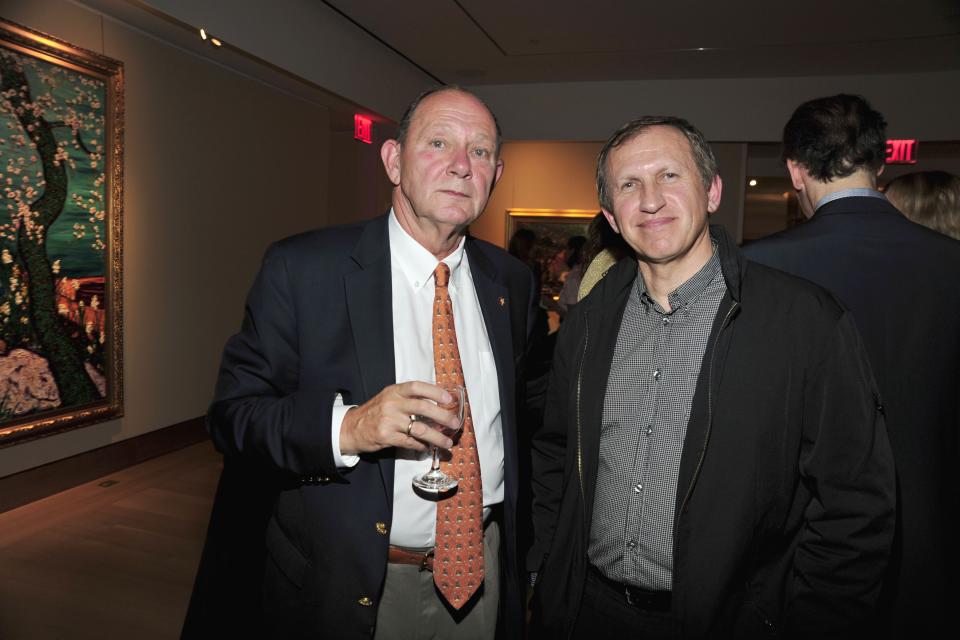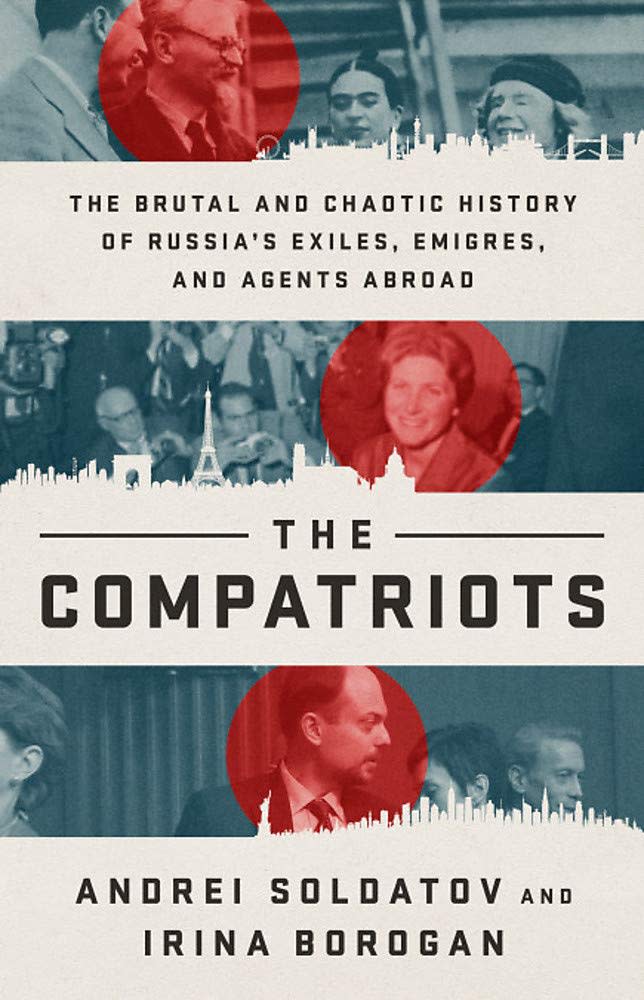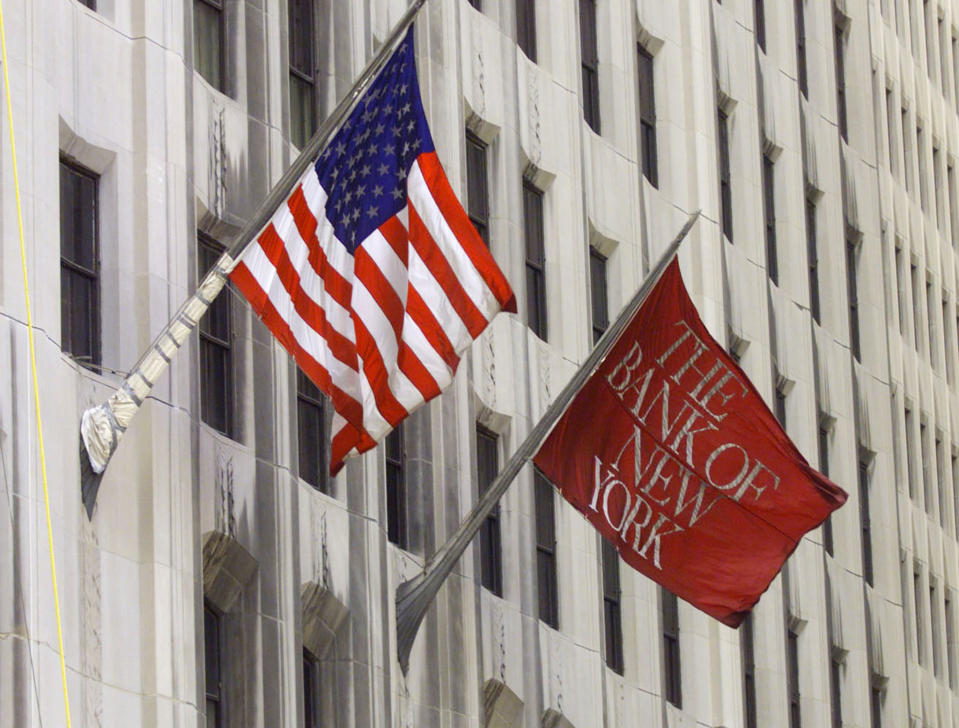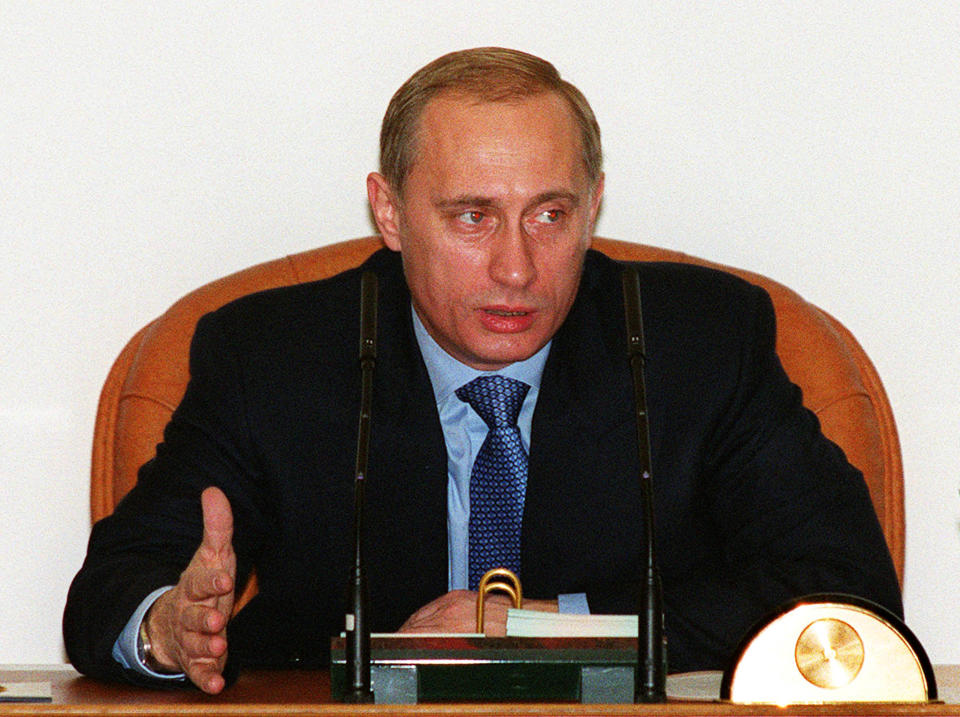How America's oldest bank became a money laundering hub for post-Soviet Russia
Editor’s note: The following is an excerpt of “The Compatriots” and has been edited for clarity.
Generally speaking, there was no love lost between the aristocratically minded, deeply Russian Orthodox descendants of the first wave of Russian emigration and the third, mostly Jewish wave of Soviet emigrants that began pouring into the United States in the 1970s. History, family background, and prejudices played a part in the divide.
But as the Soviet Union liberalized, the emerging opportunity to make money in the homeland brought individuals from these two groups together. The results of this unexpected teamwork would be far reaching, with deep consequences for both Russia and the United States.
In 1988, after what the New York Times described as “one of the biggest, longest-running, and most hostile takeover battles in the United States,” the Bank of New York—America’s oldest bank—succeeded in taking over Irving Trust, one of the biggest.

Thanks to the merger, the Bank of New York got everything the Irving Bank had, including its handsome, Art Deco-style building at One Wall Street. It also got the department dealing with Russian transactions.
Before the merger, Irving Trust had been running an extensive business with Soviet banks. This business was supervised by a Russian émigré named Natasha Gurfinkel. A Soviet Jew who had moved to the United States, Natasha was one of those lucky enough to have had their applications approved by Brezhnev’s government in 1979. In 1986, Natasha got a job with Irving Trust, where she dealt with the lucrative trade with Soviet banks.
Over at the Bank of New York, Soviet banks were handled by a Russian aristocrat from the highest echelons of tsarist society, a Russian prince named Vladimir Galitzine. When the two banks merged, Gurfinkel and Galitzine teamed up, sharing an office on the ninth floor of One Wall Street.
This was the moment when two different waves of Russian emigration to the United States finally came together. These two groups, who had never quite been able to find a way to cooperate politically, finally found some common ground when it came to making money.
With their very different backgrounds, the newly minted banking partners began working together.
Natasha and Mickey
Natasha, a nice-looking, outgoing woman, grew up in Leningrad. Her parents sent her to an elite school, the first in the city to teach English. The education was indeed good: the English department was run by the son of a former Russian emigrant who had returned to the Soviet Union from England, along with his father, in the 1930s. After high school, Natasha enrolled at Leningrad University where she specialized in Eastern studies—her field was ancient Assyria, Babylon, and Sumer.

In 1979 her family made a tough decision: Natasha, along with her first husband, her sister, and their mother, moved to the United States while their father stayed in Leningrad. In the United States, the new emigrants settled in Louisville, Kentucky, where a vibrant Jewish community dated to the beginning of the twentieth century. From there, Natasha entered Princeton University, where she earned a master’s degree in Near Eastern studies. In 1986 she landed a job with Irving Trust, which put her through a year-long course in commercial banking.
The thin-mustachioed prince Vladimir Galitzine, nicknamed Mickey, on the other hand, had the “countenance of a silent- screen actor.” Natasha was always teasing him for his archaic Russian vocabulary. The Galitzines were, in fact, nobler than the Romanovs—indeed, if it hadn’t been for that fact that the head of the family was stuck in Polish captivity in the sixteenth century, it could well have been the Galitzines rather than the Romanovs on the throne in 1917. Despite having lost their 16th-century bid, the Galitzines nonetheless remained important in the Russian empire for the next three hundred years.

All that was destroyed when the Bolsheviks killed the tsar. Fleeing the revolution, the Galitzine clan spread all over Europe. Vladimir’s parents, newly married, settled in Belgrade, where he was born. In the midst of World War II, the family moved to Germany, where, after Hitler’s defeat, they found themselves in a displaced persons camp in Munich.
They became lost there in the huge crowd of a second wave of exiles from the Soviet Union—the captured Red army soldiers and Soviet displaced persons studied with such assiduity by the American Russia watchers George Fischer and George Kennan.
In 1951 the Galitzines made it to New York, where they settled in the Brownsville neighborhood of Brooklyn. Vladimir’s aristocratic father worked as a hospital orderly, and his mother toiled in a match factory. They were poor, but Vladimir’s mother made sure to send young Galitzine to a good school. In 1960, at 18 years old, he joined the Bank of New York as a junior clerk.
In the late 1980s Mickey Galitzine worked his way up from an accounting position to the International Department. His timing couldn’t have been better. This was the very moment when, driven by the pressing need for hard currency in the face of an impending economic catastrophe, the Soviet Union was opening up its financial market.
By the time of the takeover, this process was well under way in the Soviet Union. Gurfinkel and Galitzine didn’t want to miss out. Before the Irving Trust takeover, Galitzine had made several trips to Moscow, but he didn’t understand the people he met in his family’s native land, nor did he feel any urge to return to Russia for good. “The United States continues to be my home,” he said at the time. “The opportunity to visit the places we’ve been hearing about all these years is all very attractive. But my career is here. My home is here.”

“The Compatriots” is on sale where books are normally sold.
‘Everybody connected with her very quickly’
After the bank merger, Galitzine’s closest ally at the bank, Natasha Gurfinkel, stepped up and began making most of the trips to Russia. Thanks to her work at Irving Trust, she already knew all the big shots in the Soviet banks abroad, so her existing network was very good.
Natasha was a real go-getter and very good at developing new contacts. In September 1989, a rising Soviet political star named Boris Yeltsin was stuck in Moscow’s airport with a group of American bankers. Yeltsin was on his way to the United States to give a series of lectures. At the airport, he was suddenly surrounded by Americans, but he didn’t understand a word of English. Natasha volunteered to help with translation. The two got along swimmingly, and the gentlemanly Yeltsin even carried Natasha’s suitcase to the plane.
Thanks to the dynamic duo of Garfunkel and Galitzine, by the time the Soviet Union collapsed, the Bank of New York was leaps and bounds ahead of all the American banks suddenly interested in the Russian market. The bank took steps to solidify its lead and promptly formed a new unit within the bank: the Eastern Europe division. It was led by Natasha, with Galitzine happily serving as her right-hand man. Together they were in charge of fifteen people on the ninth floor of the One Wall Street building.
As part of their work, Natasha brought Galitzine to Moscow to meet some people who were big shots, both then and now. “I was on friendly terms with Natasha, and she brought [Galitzine] to us. It was like going to a museum,” remembered Mikhail Khodorkovsky, the richest and most powerful tycoon of the first generation of Russian oligarchs, whose businesses had accounts with the Bank of New York in 1990s.

“Natasha was special,” he went on to explain. “The problem with émigrés—they compensated for their low social status [in the United States] by trying to make the impression in Russia that they were great professionals. They spoke in Russian with a deliberate American accent, all that. That’s why we always treated them with a great deal of humor.” It was different with Natasha: “She was normal, and everybody connected with her very quickly.”
When the Moscow stock exchange opened an account at the Bank of New York in the mid-1990s, the bank became the undisputed leader in the transfer of money between Russia and the United States. “BoNY [as the Bank of New York was known] took over most of the clearing [operations]. They also opened a bunch of corresponding accounts with Russian banks within Russia,” remembered Khodorkovsky. Soon more than 80% of all Russian transfers in U.S. dollars came through BoNY.
Very soon, however, the steady stream of dollars flowing from Russia to the United States became muddy.
Lucy and red flags
In New York, Gurfinkel and Galitzine’s Eastern Europe division was expanding. In need of more personnel to handle traffic, they hired another recent Russian émigré, Lucy Edwards, in 1992.
“We were looking for people speaking Russian and found Lucy doing something in another department. She was very talented, so we hired her,” Natasha told us. Then 36 years old, Lucy Edwards was a resourceful woman. She was also extremely energetic: While others in similar positions at the bank would see four or five clients a day, she saw 10 to 12.
Nobody at the bank was concerned about Lucy’s background, which was colorful. She had moved to the United States in the late 1970s by marrying a 19-year-old U.S. merchant seaman she met in a Leningrad nightclub—a not-uncommon way for an attractive young woman to escape the Soviet Union.
In the United States, she and her husband moved to Colorado where Lucy started working as bank teller, then as a waitress. After her marriage fell apart, she moved to New York in 1988. There, she landed an entry-level job handling commercial accounts at the Bank of New York.

Four years later, she joined Natasha and Galitzine in the bank’s new Eastern Europe division. Soon Lucy became a loan officer, moving into the executive ranks for the first time. In 1994 she was promoted to vice president of BoNY’s Eastern Europe division.
Her record, however, had certain red flags. In the early 1990s she was caught stealing more than $1,400 worth of clothing from a Nordstrom’s department store in Edison, New Jersey. Two years later she was caught shoplifting at a Bloomingdale’s store in Hackensack, New Jersey. She pleaded guilty both times. (Lucy remarried in 1992. She and her new husband, a Russian emigrant named Peter Berlin, were apparently soulmates: he was also arrested for shoplifting in Fairview, New Jersey, when he tried to steal sinus medicine from a local A&P.) The bank later claimed it knew nothing of Lucy’s criminal record.
Regardless, for most of the 1990s, the Eastern Europe division was run in the following manner. In New York, Natasha held the highest position, as senior vice president and head of the division, and Galitzine was vice president. As of 1996, Lucy Edwards was seconded to the bank’s London office.
Lucy and her husband, Peter, were getting rich, and they frequently spent weekends in Italy. They also bought a new spacious apartment in central London—a striking contrast to the very modest home the couple had shared in upstate New York. They enrolled Lucy’s daughter in an expensive private school.
‘Believed to be a major money laundering operation’
And no wonder they were getting rich: money was flowing out of Russia to the tune of billions of dollars a year, and BoNY provided a secure and respectable channel for that flow. “To have an account at BoNY back then was like having a badge of honor; it meant you were important,” a Russian banker who worked with BoNY in the mid-1990s told us.
But that flow of dollars from Russia had begun to attract the attention of law enforcement agencies in not one but several countries. Still, nothing happened to disrupt the channel. Despite warnings from the British authorities alerting the FBI that the money filling BoNY’s coffers could be connected with Russian money laundering or organized crime, the system continued to function without a hiccup for years.
That changed suddenly in the summer of 1998.
In June of that year, a successful, young Russian lawyer was kidnapped in the center of Moscow. Bandits put a gun to his head when he left home and ushered him into a Mercedes, which drove him to the suburbs. This kind of thing was not unusual in Moscow in the late 1990s—in fact, it happened quite a lot. What was unusual was that a few hours later, the captive lawyer phoned a friend in San Francisco and asked her to transfer $300,000 to his abductors’ account.
The rules of such business in Moscow held that a ransom always had to be delivered in cash, but apparently not this time. The friend in San Francisco duly complied, and the lawyer was released as soon as the money showed up in the kidnappers’ account—which happened to be at BoNY.

The Russian Interior Ministry launched an investigation. They sent a request to the FBI asking for help tracing the ransom. This prompted the FBI to launch its own inquiry. The abductors’ account turned out to belong to a company set up by Lucy Edwards’s husband. Lucy and her husband were put under surveillance, and their phone was tapped.
On August 18, 1999, Natasha’s phone rang in her office on the ninth floor of One Wall Street. It was a correspondent from the New York Times asking her about a particular company account. Natasha explained that her department didn’t have access to companies’ accounts, as they only dealt with other banks. A minute later, a handyman came to Natasha’s office to install a lock. She was surprised; they had never locked their offices before.
She asked the handyman, who happened also to be a Russian emigrant, why a lock was being installed. He said he didn’t know, he was just following orders. Then her phone rang again. Natasha was called up to the 10th floor—BoNY’s executive level. There she was informed that she was now suspended because of an investigation launched by the district attorney’s office. She was then escorted out of the building, and her colleagues were told not to contact her. Natasha would never see her office again.
The next day the world learned that something was rotten at BoNY when the New York Times ran a front-page story under the headline, “Activity at Bank Raises Suspicions of Russia Mob Tie.” “Billions of dollars have been channeled through the Bank of New York in the last year in what is believed to be a major money laundering operation by Russian organized crime,” reported the Times.
The two persons who had surfaced in the investigation, the paper reported, were both senior officers with the bank’s Eastern Europe division. Both had emigrated to the United States from Russia, and both were married to Russian businessmen. The paper named them: Natasha Gurfinkel (the Times claimed “the accounts have been handled” by her) and Lucy Edwards.
“The Compatriots” is on sale where books are normally sold.
$7.5 billion moved out of Russia in three years
FBI investigators had discovered that Lucy’s husband, Peter, had set up several companies whose bank accounts were at BoNY. These accounts were used for transferring billions of dollars from Russia to the United States. One account, registered to a company called Benex, was linked to a notorious mafia boss from the former Soviet Union, a man wanted by both US and British authorities. According to the Times’s story, British intelligence reported that “some of the money from the account went to pay contract killers and some went to drug barons.”
The scandal gathered momentum, and more accusations followed. U.S. media outlets published more stories; $7.5 billion was said to have been moved out of Russia through the accounts controlled by Lucy’s husband in just three years via BoNY. American newspapers began naming various Russian oligarchs as well as, among others, Boris Yeltsin’s son-in-law. Moscow decided to run its own investigation.
Things got hotter in September 1999 when the U.S. House of Representatives’ Committee on Banking and Financial Services launched hearings on Russian money laundering. The BoNY investigation became even more important when Yeltsin vetoed Russia’s ratification of the International Anti-Money Laundering Convention.

“I was summoned by Yeltsin,” remembered Khodorkovsky, who, by late 1999, was one of Russia’s top oil tycoons. “He told me that the FBI complained about me because of the scandal. I said I knew nothing about it. Yeltsin said, ‘Then go and get it sorted out.’ So I came back to my office, we prepared all documents, and I phoned the U.S. embassy in Moscow and asked to talk to the FBI people. I gave them our documents, went back to Yeltsin, told him that I spoke to these guys and that everything was OK.”
What Khodorkovsky failed to mention was that he had been invited to testify before the American congressional committee on Russian money laundering and had declined to come. The congressional committee also invited Natasha Gurfinkel and Lucy Edwards to testify, but they also failed to come. Instead, the bank sent its chairman and CEO Thomas A. Renyi, a Vietnam veteran. It was Renyi who had supervised the integration of the Irving Trust and BoNY. On the witness stand, Renyi admitted that allowing the suspect accounts “to remain open and active without sufficient questioning was a lapse on the part of the bank.”
A daring scheme with three main goals
Before long, many financiers in Russia and the United States came to see the BoNY case as an anti-Russian witch hunt. As the Russian presidential election of 2000 approached, fighting among different power groups intensified. The country was recovering slowly from the devastating economic crisis of 1998 when Russia defaulted on its national debt. Now politicians tried to capitalize on emerging feelings of inflamed patriotism combined with a sense grievance against the West for its failure to rush in and help the Russian economy. Even liberal Russian newspapers treated the BoNY scandal as a manifestation of anti-Russian bias.
The scandal had started with a bang. But after just a few months, it became clear that little would change. Too many interests had too much at stake to stop the hemorrhaging of Russian money. U.S. law enforcement never accused either Galitzine or Gurfinkel of any crime. Natasha, for her part, was angry that BoNY had done nothing to protect her. She spent a month and half in New York waiting to be questioned about BONY, but nobody was interested in talking to her. Eventually, she resigned and moved to London. Her lawyers in Moscow subsequently sued BoNY, and in the end, the bank agreed to unfreeze her money, benefits, and bonuses—all in all, over a million dollars. But she never got another job.

Still, she didn’t hold a grudge against Lucy. “Lucy was just a fool. She traveled to Russia a lot, saw this crazy amount of money coming and going, and couldn’t resist the temptation,” Natasha told us. Then she admitted, “Well, it was our mistake, mine and Galitzine’s—we didn’t watch her.”
After a year and a half of investigation, U.S. federal agents took Lucy Edwards and her husband, Peter Berlin, to District Court in Manhattan. The couple told a federal judge that they helped create a money laundering scheme that successfully moved billions of dollars out of Russia through a network of front company accounts at the Bank of New York that were controlled by Lucy’s husband. From there, the money went to offshore accounts. The scheme was designed by “a group of small but politically well-connected Russian banks.”
The couple said the scheme had three main goals: to avoid Russian customs duties on imports, to evade Russian taxes, and to wash the profits of criminal groups through legitimate banks—including the ransom for the young Russian lawyer kidnapped in Moscow. Lucy and her husband admitted that they earned nearly $2 million in due course.
This was evidence of wide-scale state plundering. Yet, ultimately, it had little or no effect on how business between the two countries was done.
Lucy and her husband cooperated with the investigation and pleaded guilty. In 2006 they were sentenced to five years’ probation. A year before that, the Bank of New York agreed to pay $38 million in penalties and victim compensation arising from the case of money laundering and fraud.
‘Something that the world has never seen before’
In Russia, the scandal ended with a whimper. No one in Moscow was accused of any wrongdoing whatsoever. In 1999 Vladimir Putin, then prime minister, said that Russian law enforcement agencies had investigated the case and could not confirm that Russian money had been laundered through the Bank of New York. As Putin rather cynically explained, “Our senior law enforcement officers met with their American counterparts. But, unfortunately, or fortunately for us, the information that was in the media was never confirmed.”

In the end, only two people were held responsible for the scheme.
Once the Russian émigrés had pried the door to the American financial market open for Russians, their main concern was to keep that door open. Abiding by the rules, on the other hand, was never a top priority.
It took a good decade for U.S. policy makers to realize just how corrupt and cynical the political system really was that replaced communist rule in Russia. At least for some, this understanding also entailed an awareness that this corrupt and cynical system had the potential to one day infect the United States.
In September 1999, James A. Leach, chairman of the House Committee on Banking and Financial Services that had held the headings on Russian money laundering, was struck by the notion that some of the laundered money could have seeped into the American political process. He remarked:
“When we look at Russia today and we see the infiltration of former KGB into the financial system, into the economy, and we wonder what is unique about Russia, because there are other kleptocracies in the world, but one of the unique aspects of Russia today is: A, that it is so large and extraordinary; and B, it is a backward economy in many ways, but it is immensely sophisticated in many other ways, for example, intelligence. The combination of kleptocratic greed, coupled with centralized controls and bureaucratic expertise and coercion of a historical nature is something that the world has never seen before.”
Back in 1999, the American congressman couldn’t know how prescient he was. In the years to come, Russian money would flood into the United States by the billions. Russian oligarchs became investors in America. They sought out, made, and cultivated important political connections. For many years they acted on their own behalf, not the Kremlin’s.
But Russian foreign intelligence was never far behind. And the collapse of the Soviet Union hadn’t changed them much.
Andrei Soldatov and Irina Borogan are co-founders of the website agentura.ru and authors of several books about Russia. “The Compatriots” is on sale where books are normally sold.
Read the latest financial and business news from Yahoo Finance
Follow Yahoo Finance on Twitter, Facebook, Instagram, Flipboard, SmartNews, LinkedIn, YouTube, and reddit.

 Yahoo Finance
Yahoo Finance 